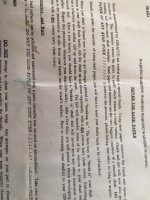i am not a cue maker
in the pool room yesterday i saw a player do that to clean his shaft
he told me used 1200 because that was the highest grit he could get
but now he found some 2000 so he is using that to clean it after use
or to make it feel smooth when it gets alittle sticky
i guess to him its like using Q-wiz
is it ok to do that???
will over time it thin out the shaft??
thanks for your replies
in the pool room yesterday i saw a player do that to clean his shaft
he told me used 1200 because that was the highest grit he could get
but now he found some 2000 so he is using that to clean it after use
or to make it feel smooth when it gets alittle sticky
i guess to him its like using Q-wiz
is it ok to do that???
will over time it thin out the shaft??
thanks for your replies

